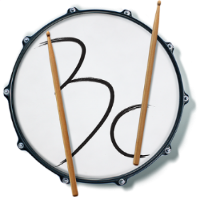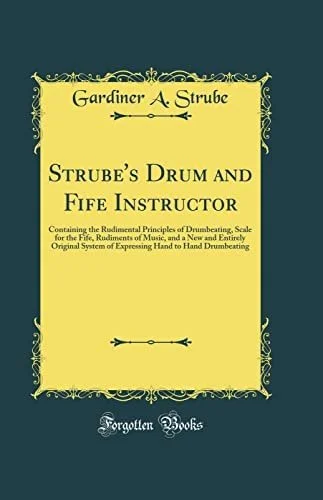Creating Vocabulary: Essential Rudiments, Hybrid Rudiments, and Beyond
If you’re one of our current students or have ever taken drum lessons before, you probably started out by learning a few basic rudiments before doing any serious drum set playing. Beginning with single strokes and double strokes, rudiments help drummers learn the necessary mechanics involved with playing the drums and achieving a higher level of expressive playing.
However, conventional rudiments involve only using the hands and are somewhat limited in scope. Why aren’t there drum set rudiments that also incorporate the feet? Maybe it’s on us to create our own . . .
The Essential Rudiments
Beginners learning to play a pitched instrument, like guitar, piano, bass, violin, oboe, etc. typically start out by learning scales, which are systems of pitches with specific relationships to one another. Scales are the building blocks to creating melodies and harmony (combinations of pitches), which are used to evoke particular moods within music. However, drummers aren’t bound by tonality so we don’t really have to worry about scales. (But it’s not a bad idea to learn what some of them sound like!)
Instead, beginning drummers need to learn rudiments, which are short rhythmic fragments played using a specific sticking pattern. Different rudiments result in various inflections, which require a range of techniques to properly execute. Basic rudiments are crucial for developing the techniques and methods used to play the drums.
Rudimental drumming dates back to 1500s Switzerland, where the Swiss guard were among the first to use fifes and field drummers to help communicate on active battlefields. Specific rudiments and combinations were used to effectively disseminate commands among troops. The sound of a drum carried through the air much more effectively than the human voice. This military practice gradually spread across Europe throughout the 1600s and 1700s, eventually making its way over the Atlantic with the British to the Colonies.
Nowadays, there are 40 Essential Rudiments, according to the Percussive Arts Society. That’s a substantial chunk of vocabulary! Of these 40 rudiments, 26 are considered American, and the remaining 14 are Swiss. These patterns range from extremely basic to quite challenging and train users to gain a higher level of control over the sticks. Some rudiments have a dynamic component as well, where certain strokes are supposed to be played louder than others, or with a different inflection, such as bouncing the stick or pressing it into the drum’s surface. Most of these rudiments were more formally standardized by military band leader, Gardiner A. Strube, shortly after the US Civil War.
A few examples of basic rudiments include single strokes (RLRL), double strokes (RRLL), single paradiddles (RLRR LRLL), and flams (two consecutive strokes played closely enough together that it translates as one thicker-sounding single stroke). Some rudiments, such as paradiddles and flams, have quite a few variations extending from them. Beyond single paradiddles, there are double paradiddles (RLRLRR LRLRLL), triple paradiddles (RLRLRLRR LRLRLRLL), and paradiddle-diddles (RLRRLL / LRLLRR). Other flam variations include flam taps, flam accents, flam paradiddles, and patafla-flas (which we can all admit is a pretty silly name). The video above demonstrates all 40 essential rudiments!
Hybrid Rudiments
While the essential rudiments cover a lot of ground, Hybrid Rudiments take things several steps further by exploring an array of inflections, variations, and combinations of other rudiments. There are also many other unique sticking patterns prevalent in the realm of hybrid rudiments. While there are only 40 essential rudiments, there are hundreds upon hundreds of hybrid rudiments, with more constantly being added to the list. As it stands, there are over 500 hybrid rudiments in addition to the standard 40 rudiments. Now THAT is a lot of vocabulary!
If you think some of the essential rudiments have silly names, hybrid rudiments take nomenclature to an extreme. Some of the stranger names include blushdas (a combination of a flam and a drag), grandmas, eggbeaters, bugada chickens (yes, seriously), and hertas. Despite the goofy names, some of these patterns are incredibly challenging to play and require a high level of control to properly execute. Stringing together combinations of essential and hybrid rudiments yields practically unlimited musical possibilities, especially depending on how these phrases are applied to the drums. There could be dozens of ways to express any single phrase or combination!
Build Your Own!
Essential rudiments and hybrid rudiments are fantastic for gaining control of your hands and establishing some vocabulary, but what about your feet? How come none of the rudiments integrate bass drum or the hihat pedal? Well, in fairness, the modern drum set wasn’t created until decades after most rudimental patterns. There are lots of ways to substitute a foot in place of hand to split up rudiments over more of the drum set, but even then, there are many other unique patterns drummers regularly utilize that don’t presently exist under the umbrella of conventional rudiments or hybrid rudiments.
For example, John Bonham of Led Zeppelin regularly played drum fills using a pattern consisting of two strokes with the hands followed by a single kick all at an even rhythmic rate. He mostly played the pattern leading with the left hand, boiling down to LRK. Since it’s a 3-stroke pattern, it lends itself to functioning as triplets. Bonham used this pattern so much that it became a staple in the way he played and is often known simply as “Bonham triplets.” While it’s not an official rudiment, it’s certainly well-known among many drummers and functions very much the same way that “real” rudiments do.
So couldn’t we just create our own rudiments to suit the way we play and to test our creative abilities? Absolutely! By learning a foundation of essential and hybrid rudiments, you’ll more intuitively feel out ways to modify existing patterns, or generate your own from scratch. A few other examples of commonly used patterns on the drum set that aren’t technically rudiments include RLLK, RLRLLK, RLRK LRLK, and RLKK. At a certain point, you become only limited by your imagination and ability to play whatever patterns you think up. Don’t be afraid to get risky!

